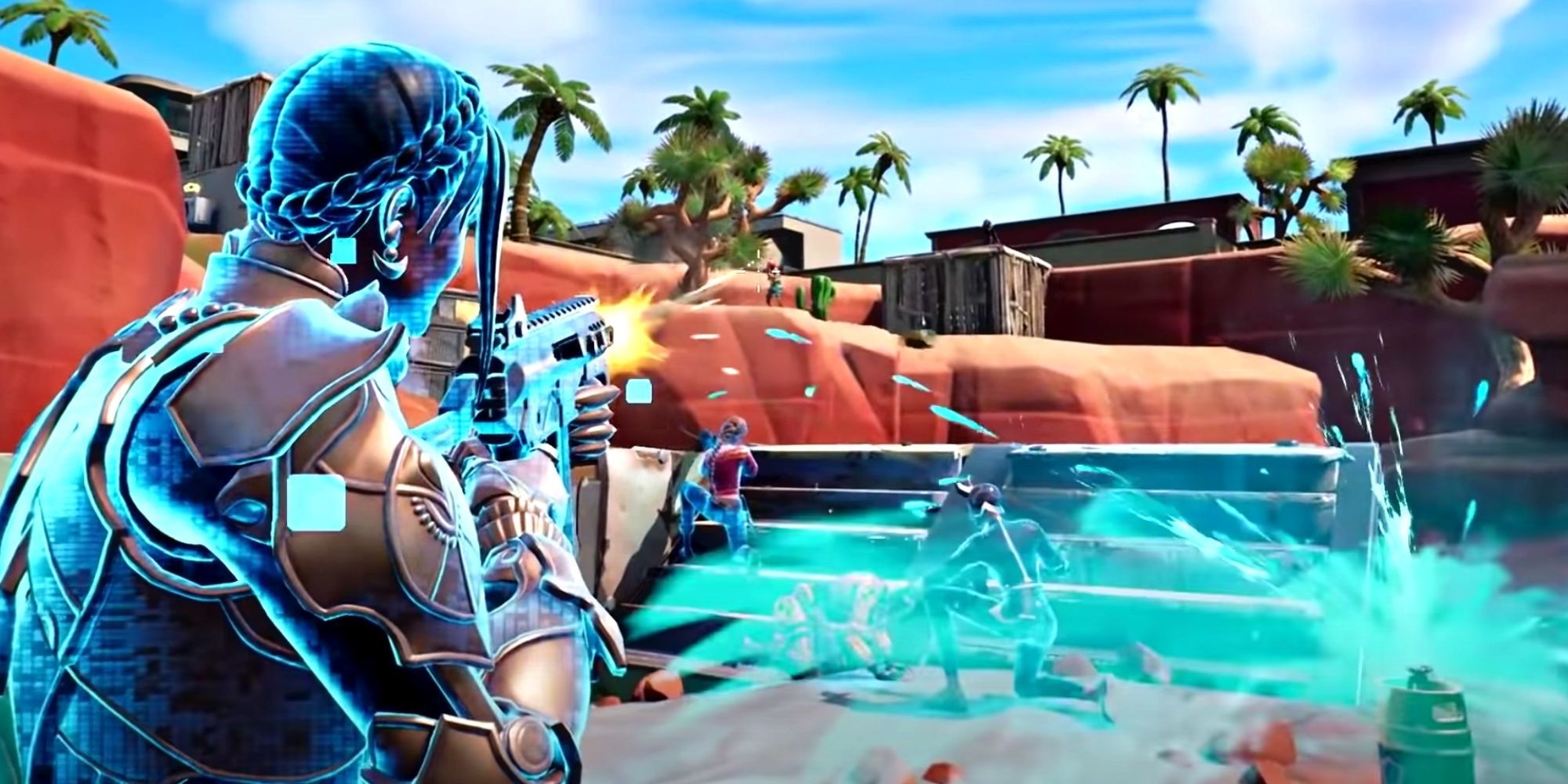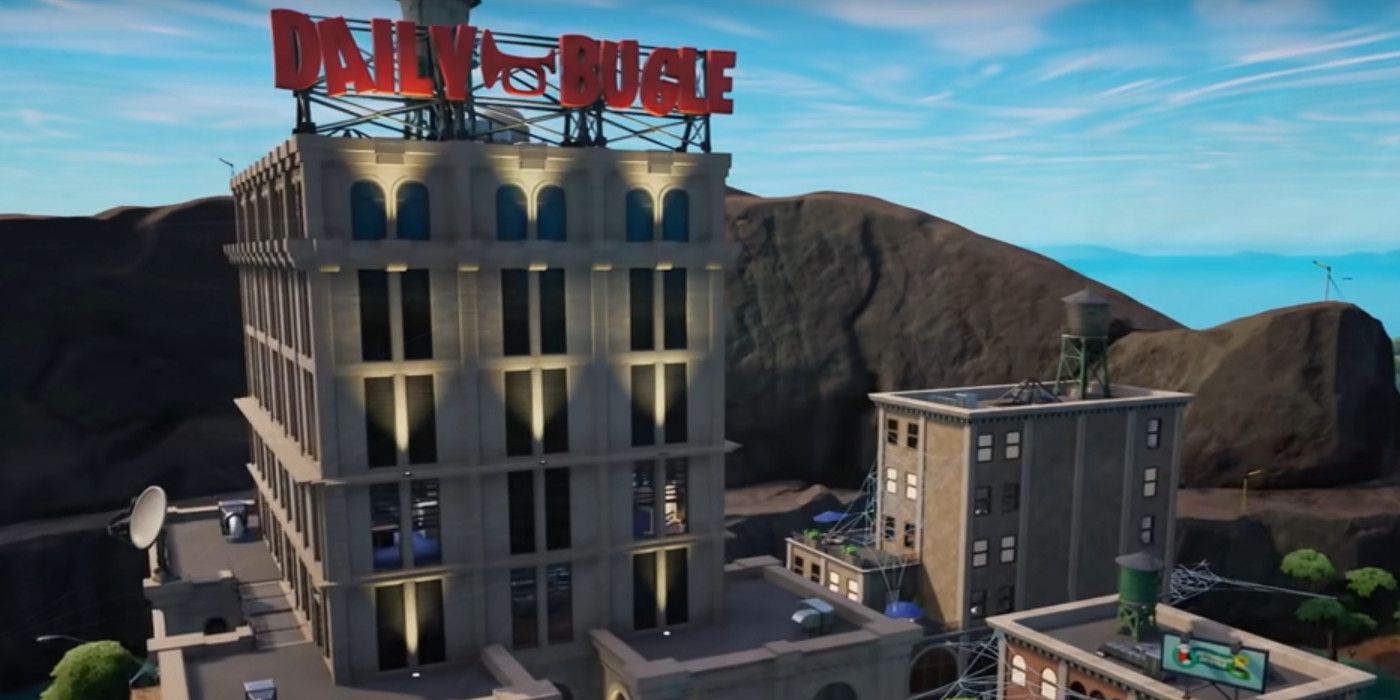Earlier this December, Fortnite upgraded its engine to Unreal Engine 5 from 4. Unreal Engine 4 already had ray tracing and a complex particle effect system that helped create polished graphics for Fortnite, but the upgrade has important features that game developers outside of Epic Games are also taking advantage of. The Matrix Awakens and Senusa’s Saga: Hellblade II were both shown off at The Game Awards and showcase the high level of detail games can achieve with the new engine.
Unreal is owned now by Epic Games, so this change doesn’t seem particularly surprising, but it’s still important nonetheless, as Fortnite: Chapter 3 runs entirely on the upgrade. The company is heavily marketing the improvements to large open-world games and detail-oriented realism with revisions of the lighting system and world generation. Fortnite still being one of the most played free-to-play games means that the engine has to run on high-end systems and low, so the game running flawlessly despite varying PC and console builds is important.
Fortnite’s art style seems to clash with the realism that the Unreal Engine is advertising, and at the top end Fortnite doesn't take full advantage of Unreal 5, but these changes actually make for a better experience for all players. Not only does the development team benefit from improvements to workflow management and processing speed, but people with lower-end systems will also still be able to run the game at higher resolutions due to the improvements in upscaling and world generation. Overall, not only will Unreal Engine 5 allow Epic to work more efficiently on updates to the already massive game, Fortnite players will most likely see an improvement to graphical quality and frame rates.
Unreal Engine 5 Makes It Easier For Fortnite Players To Experience Higher Frame Rates
The graphical rendering in Unreal 5 allows the game to run on a more versatile set of PCs than before. Even players who already have a PC that can run Fortnite will benefit from the upgrades to how Unreal Engine 5 works with GPUs. The new engine improves over Unreal Engine 4 by working with both AMD and Nvidia GPUs to use temporal super-resolution, which upscales 1080p pictures into high-fidelity 4k - meaning the Switch version of Fortnite could use Nintendo's new 4k-supported dock and rumored revision.
For consoles, this is also a huge boon given the PS5 uses AMD graphics cards and the Switch runs Nvidia. On the player’s end, no matter what GPU they run this change decreases the stress on the card, as upscaling is a lot less demanding than fully rendering buildings and landscapes in a higher resolution. Fortnite has a somewhat simple and stylized art direction, but having better graphical fidelity could mean the lower-end systems could experience higher-quality textures and draw distance, improving the gameplay experience.
Unreal Engine 5 Lets Fortnite Players Use Up to 64 Processing Cores - If They Want To
For CPU processing, Unreal Engine 5 now lets developers create games that can take advantage of up to 64 cores. More processing power usually equates to higher frame rates, but not significantly so for Fortnite specifically. This change will not be worth it for all but the most dedicated players due to the prohibitive price of CPU cores, but it is worth mentioning as it still lets Fortnite and all Chapter 3's new updates run at even higher performance when working in creative mode.
Fortnite already has optimization for players that have lower-end PCs and regular consoles. Still, for players that want to get into the nitty-gritty of frames and get more competitive, Unreal Engine 5 will be able to take full advantage of more powerful builds.
The Lumen & Nanite Systems Might Mean Bigger Fortnite Updates, Faster
While the Lumen and Nanite systems integrated into Unreal Engine 5 are more for development than for gamers, it still improves the play experience of Fortnite. One of the defining features of the game is its continually-changing world map, and the upgrades to lighting and texturing could let the team modify the existing content quicker. On top of also allowing for better dynamic lighting, the new systems allow for larger worlds with consistently high detailing, meaning that expanding the world of Fortnite with events like Winterfest and unique concerts could be easier than ever.
Basically, a lot of these changes automate what had to be done manually by artists and modelers - the engine reduces polygon counts eliminating the need for separate levels of details. For light sources, no longer do developers have to wait for the engine to generate lightmaps that only light one object a specific way - the engine does light calculations on the fly at a much faster rate than it did before. Decreasing the workload needed to finish a project could mean that the development team is able to create more original content and characters without needing to do as much specific tuning to environments.
Unreal’s World Generation Has Improved Fortnite
In the PS5 tech demos, Unreal Engine 5 has a unique way of generating worlds that’s different from other engines - most of the time, when games load maps, they have to load a full section to a user’s RAM and then process where the character is on that map to render their surroundings. This can cause pop-in and generally make load times slower as the system has to keep the world loaded but also delete it entirely when moving to a different section of the level. The new world partition system now being utilized in games allow developers to create larger worlds that load procedurally based on what the player can see. All this is done by the engine itself and doesn’t incur a huge performance dip when consistently loading these smaller areas.
Developers like Bioware are moving toward Unreal, and this feature allows multiple developers to work on different parts of the map without overwriting each other’s work, but the big change player-side will be load time improvements and better graphical capabilities. Since landscape destruction is a large part of Fortnite, changes to the map might be able to be saved to a server and only called when necessary, saving processing power and improving multiplayer performance. Loading smaller areas might also mean that draw distances actually improve, as the game would no longer need to hide as much scenery behind haze.
The biggest boon from Unreal Engine 5 is most likely all development-focused, but it allows for game designers to create ideas like Fortnite's new smooth Marvel-esque web-slinging more efficiently, leading to better experiences. Already, the new map for Fortnite: Chapter 3 seems to be taking advantage of many of the higher-quality resolutions and open-world possibilities. The game's consistent update strategy and integration of popular IPs require a quick turnover time. The new engine could allow for more major overhauls to maps and better performance for creative mode.
Of course, there is more than just engine quality that goes into the creation of the game. At the end of the day, Unreal Engine is still a tool and there can still be user error, real-life setbacks, and creative miscalculations that can result in poor performance or a worse play experience. However, the future does look bright as Fortnite continues to improve and get updated years after its release. Unreal 5 won’t trample on the original art direction or gameplay, the improvements to the engine will make Fortnite an even more polished experience.





